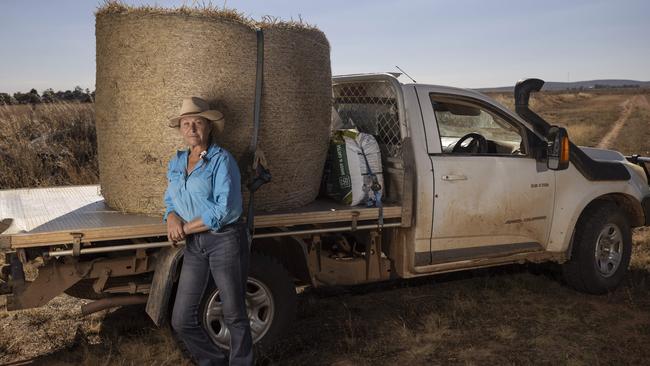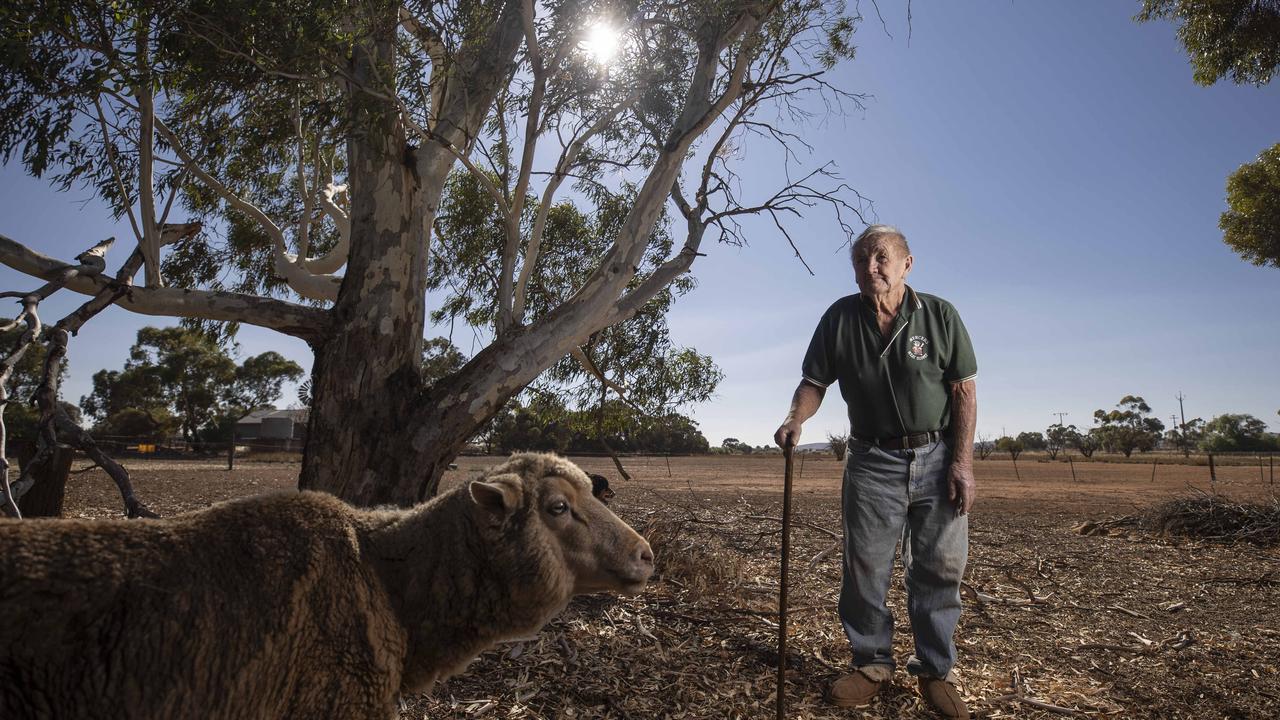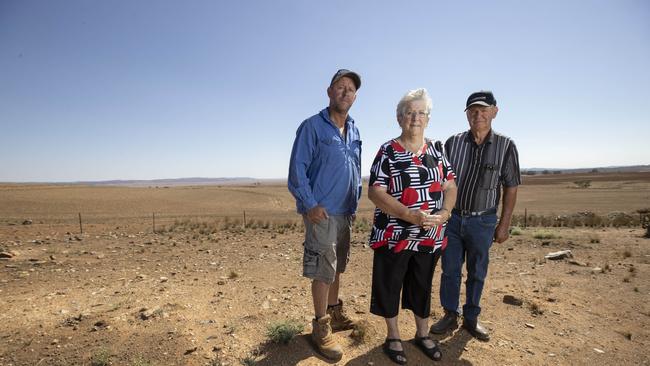Peterborough farmers talk about the heartache of killing livestock because of the drought
A salt-of-the-earth farmer has broken down as she discloses the heartache of having to destroy sick animals in the midst of SA’s record-breaking drought.
SA News
Don't miss out on the headlines from SA News. Followed categories will be added to My News.
Bridget Woods is not too proud to cry.
Tears flow freely as the weary farmer describes having to shoot one of her precious cows moments after she has helped it give birth – another victim of the crippling droughts.
“It’s heart-breaking,” she says. “You sit in a paddock beside a cow and you’ve just caught its calf and you’re about to shoot it.
“You’ve watched it for seven or eight years – you watched it being born – and then you’ve got to shoot it and drag it away and burn it come winter.
“It’s not the stuff you ever talk about. It’s the stuff that you just wear and you pick it up, have your cry and get on with it. Because you can’t get down because you’d just keep going down.”

We’re sitting in the loungeroom in the old stone Peterborough home of Ms Woods’ adopted uncle Peter Sandland (yes, his name is Peter and he’s from Peterborough) discussing the impact of one of the harshest droughts the farming sector can remember.
Things are especially tough up here near Peterborough, and even worse a bit further north, where Ms Woods and Mr Sandland run sheep and cattle on properties in districts known as Black Rock and White Well.
Mr Sandland was born at White Well, about 50km north east of Peterborough and says he has been “chasing animals around for more than 70 years”. He’s 87 these days and not as mobile as he once was, especially after a serious car accident left him housebound a few weeks ago.
Ms Woods, 64, describes herself as Mr Sandland’s “wingman”. They met 34 years ago when she came to Peterborough for a two week holiday but fell in love with the red dirt of the country. She was a jockey and he was training race horses, and so they teamed up.
Then they became mates. Then they became family.
Today is a milestone day for Mr Sandland’s recovery. He’s about to head back out to the farm for the first time since the accident. He’ll shuffle to the ute parked on the dusty footpath with a bale of hay and four bags of feed on the back. He and Ms Woods will make the hour-long trip to the farm to feed the sheep and cattle.

It’s a thankless, repetitive process, and one they’ve been doing every day for months on end – since the rain stopped and there was no pasture feed for their livestock to graze on.
They’re too afraid to add up the amount of money they’ve spent on feed, but as the price of hay has skyrocketed to $300 a bale, it’s costing them up to $9000 a month and they’ve resorted to supplementing hay with protein-deficient straw. They have been forced to reduce their sheep numbers by two thirds in the past 12 months.
“There’s just no guts in the country – no moisture,” Mr Sandland says before shuffling out to the ute. “If it doesn’t rain again before the cold weather, we’re buggered. It’s as rough now (for farmers) as it has ever been.”
About 10km east of Peterborough we catch up with Graham, Anne and Ashley McKay. Graham, known universally around here as Spud, has been running their farm for 61 years and is in the process of handing it over to Ashley, 51.
Their land is on the wrong side of Goyder’s line, the traditional geographical boundary that marks the northernmost limit of reliable cropping rain, so they are accustomed to living in drought.

But one has been something out of the box. They describe themselves as conservative grain growers and graziers but have lost hundreds of thousands of dollars in the past two years.
In 2023 their crop yield was a quarter of the previous year. In 2024 it was zero. They’ve run out of oats for their sheep, so have reduced stock numbers and relied on hay runs to keep them alive.
“I try to be positive, I’m not trying to be a negative person, but I’d say this is probably going to set us back two or three years before we can get back on track,” Graham McKay, 78, says.
“The bank was pretty good to us – they’ve given us carry-on finance. But that has to be paid back at some stage. There are a lot of people who have to go cap in hand to try and get carry-on finance to put another crop in.”
Like everybody else, they’re praying for a season break to come in April, before the ground gets too cold and the frost comes in. And they’re keen for people down in the big smoke to understand their plight.
“It’s just the realisation of how hard the farmers work to get those crops in,” Anne, 74, says. “People in Adelaide, or in any cities, probably don’t realise they work all those hours and then get no income back – no reward whatsoever.”
More Coverage
Originally published as Peterborough farmers talk about the heartache of killing livestock because of the drought






